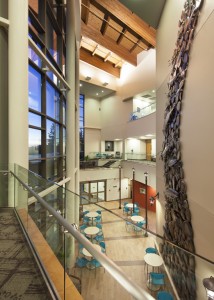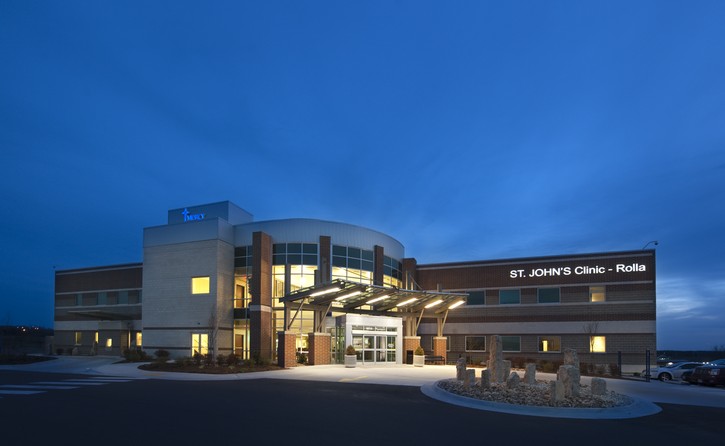Achieving operational targets by focusing on a new driver:
The transformation of the patient experience into a customer experience
The shift toward the transformational customer experience introduces new variables related specifically to the patient experience, which need to be optimized in addition to traditional operational variables such as staff utilization, resource utilization, durations and revenue.

Innovative healthcare organizations believe that, indeed, it is possible to achieve, meet and exceed operational targets by focusing on this new driver: the transformation of the patient experience into a customer experience. On the other hand, the transformational customer experience has been the foundation of success for every other industry from consumer electronics to telecommunications to hospitality. Likewise, when a healthcare organization initiates operational optimization via a focus on the goals of the transformational customer experience, it is a win-win strategy.
A patient/customer-centric approach to care is also incentivized by the availability and great speed of communications and social media, which enable consumer comparisons. For example, the PriceWaterhouseCooper Health Research Institute surveyed 1,000 consumers in late 2012 to assess the state of healthcare ratings (http://www.pwc.com/us/scoringhealthcare). Nearly half (48 percent) of consumers said they have read health-related reviews, including patients’ reviews in social media, and one-third have used reviews to make decisions on where to get care.
Optimizing the Patient/Customer Experience:
In order to meet these new expectations and achieve the transformational customer experience, healthcare organizations need to consider several domains of care:
- Access — including appointment scheduling, navigation/wayfinding, access to and portability of medical records
- Quality and safety — including security, infection control, outcome metrics and comparisons against national standards
- Experience — including speed, integration and consistency of service, comfort, privacy and loyalty
Optimization of access. Pre-visit protocols, information data harvesting and processing, wayfinding and navigation require modification of spatial and operational variables. The electronic health record data can be used to guide significant improvements in patient/customer registration, admission and processing. Similarly, new communication technologies enable distinct navigation and wayfinding solutions, such as information kiosks, interactive electronic signage systems and personal digital assistant devices. Indeed, the new customer/patient experience commences at the pre-visit “digital dialogue” with the call center often referred to as the customer portal and continues through arrival, encounter protocols and discharge pathways supported by significantly modified data- and metrics-driven protocols.
The call center is a powerful tool that leverages the immense and broad capacity of the new digital information data banks. Through this interactive port and communication pathway, customer/patients and the organization exchange information regarding demographics, health conditions, insurance, appointment needs and outcomes. The center also links care management protocols, quality and utilization metrics and navigation resources.
For example, Mercy Clinic in Rolla, Missouri, built a three-story, 106,862-square-foot outpatient facility housing a multispecialty clinic practice, an ambulatory surgery center and other outpatient services. Staffed at 0.5 FTE per care giver, the new customer center at the St. John’s Clinic is the epicenter of health information management, while also improving resource utilization (leveling) and vastly improving service quality. Located in a 1,800-square-foot suite within the building, supported by approximately 22 staff representing nursing, medical assistants, scheduling, billing and care coordinators, the customer center has become the main contact point for all patients. Appointments, billing inquiries and care coordination affairs are effectively managed. Additionally, the customer center assists in distributing services and is a resource-leveling tool.
Over time, many hospital campuses have evolved into mazes that are difficult to navigate. Technology is assisting with physical access and wayfinding within these campuses. Navigation apps, touch-screen kiosks, sounds, lights and color are used to guide and lead users to the many destinations within the medical center.
For example, the Carle Foundation Hospital is a 345-bed regional care hospital and Level 1 Trauma Center spanning over several city blocks in Urbana, Illinois, with a need to transform patient navigation/wayfinding. After several months of study and design, supported by Lean concepts and digital modeling, a multi-tier solution has been developed by The Neenan Company and will be installed this summer. The solution defines entry gates and creates circulation nodes, which, when linked by color- and graphic-coded pathways, becomes the new multi-technology wayfinding system. Traditional signs are the familiar tool; however, color, shapes, textures and sound add significant additional reinforcement. Electronic, interactive and video displays are introduced to further support the customer with PDA devices including apps and web pages.
Optimizing quality and safety. Quality and patient safety have always been essential elements of the healthcare industry. Traditional quality measurement was symbolic and only geared toward accreditation and regulatory compliance. The healthcare law introduces specific targets that are associated with payment formulas, which must be met by health plans and healthcare organizations. These variables are reported with transparency, allowing users to clearly evaluate care decisions. Several publicly accessible grading and comparison tools, such as Healthgrades, are easily available through the Internet.
Barton Health serves community members and visitors to the Lake Tahoe and Carson Valley, areas. The Tahoe Center for Orthopedics is a nationally recognized, comprehensive program for orthopedic excellence focusing on quality and patient-centered, personalized care, including prevention and wellness, non-invasive treatments and surgery and rehabilitation, to enable patients to return to a fully mobile lifestyle. Existing services have been housed in the hospital and an orthopedic clinic several blocks away, forcing patients to travel among departments and buildings to access the full range of services.
To support and expand the mission of this program, Barton Health has commenced the development of a new Wellness Center of Excellence. The design of a new 27,000-square-foot facility adjacent to the hospital significantly consolidates and integrates related services to optimize access and delivery, without duplicating costly hospital-based services and equipment, such as MRI. A formerly separate wellness and fitness training center also will be incorporated into the same center. Leveraging high-altitude training will also offer the market a carefully defined athletic program and service line. A covered parking garage is attached to the center.
Optimizing the experience. Today’s healthcare organizations can achieve speed and consistency of service without compromising the patient/customer experience, including privacy, comfort and convenience. To this end, the facility solutions and the intent of healthcare organizations match those of the hospitality industry. As a result, the sterile, imposing and institutional appearance is being replaced by hotel-like lobbies where comfort is paramount. Daylight and environmental sustainability are also demanded by communities, and healthcare organizations have accepted the challenge to deliver facilities with greatly improved performance.
Coquille Valley Hospital, a critical access hospital in Coquille, Oregon, exemplifies the new commitment to addressing customer needs with a transformational experience for the patient/customer, family and community. The replacement hospital introduced private, single-occupancy patient rooms supported by interventional programs and public spaces derived from those in modern hotels. Open and daylighted spaces are easy to navigate and are anchored on the new “café,” which has become the community’s gathering place. Further, the transformational experience ensures compliance with HIPAA and accessibility while optimizing flow. A patient-centric design supported by Lean concepts and digital modeling brings services to the patient instead of the reverse. It is about service, convenience and deliberate effort to deliver value for the customer.
Healthcare innovators have shifted from the traditional organization-centric approach toward a patient/customer-centric approach to care. They are using metrics, Lean concepts and digital modeling at all phases of this process to measure their outcomes and foster continuous improvement. Leveraging a growing body of metrics and benchmarks to optimize patient stay durations reduces wasted resources and inventory. Indeed, it is a win-win strategy.
Photos courtesy of LaCasse Photography.





